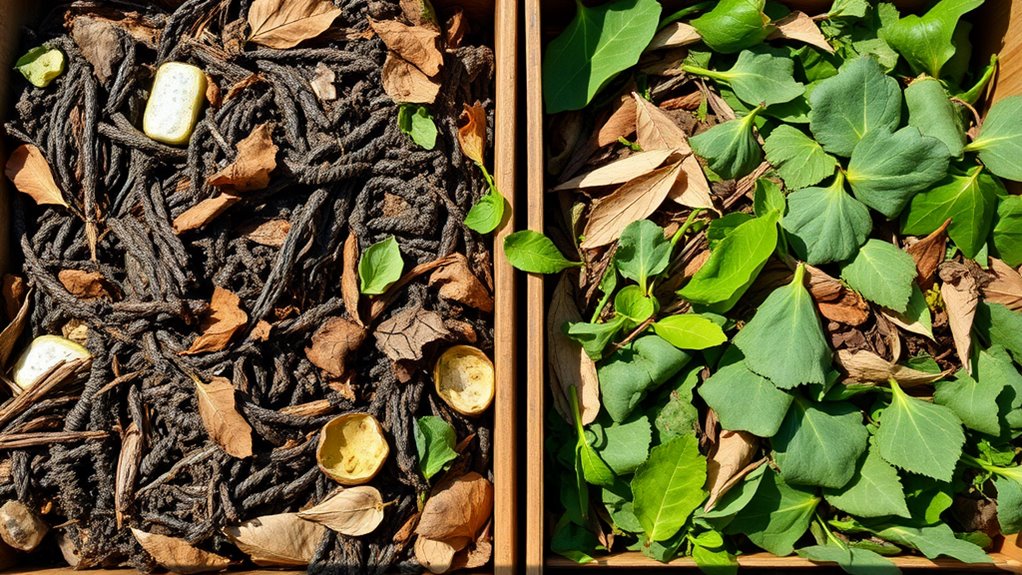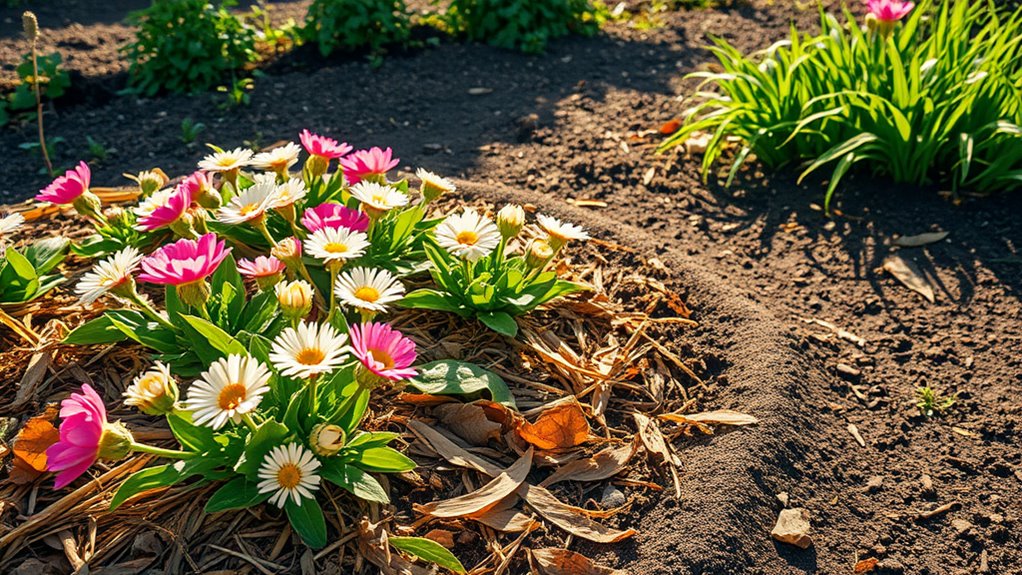These Seasonal Tips Keep My Garden Looking Fresh All Year
You’ll keep your garden looking fresh all year by following these seasonal tips tailored to each phase. In spring, assess soil health and clear debris to spark new growth, while summer’s focus is watering early and deadheading for vibrant blooms. Autumn means harvesting produce and prepping soil, and winter involves mulching and protecting from frost. Year-round maintenance, like pest monitoring and crop rotation, sustains vitality, so let’s explore these strategies for even greater results.
Key Takeaways
- In spring, assess soil health and prune perennials to promote fresh growth.
- During summer, apply mulch and deadhead blooms to maintain vibrant colors.
- In autumn, harvest produce and add compost to prepare nutrient-rich beds.
- For winter, shield plants with mulch and windbreaks to protect foliage.
- Year-round, test soil pH and rotate crops to sustain garden vitality.
Spring Awakening: Revitalizing Your Garden
As spring unfolds, you’ll find it’s the ideal time to revitalize your garden with a few targeted steps. Before proceeding, remember to assess soil health as a foundational step for ensuring your garden’s long-term success.
Unlock seasonal gardening secrets by first clearing winter debris to prevent pests and diseases, giving plants a fresh start.
You’ll actively prune perennials and shrubs to promote healthy buds, then test soil pH and enrich it with compost for optimal nutrient uptake.
Sow cool-season seeds like spinach or pansies, ensuring they’re spaced correctly for strong roots.
These practical actions set the stage for a thriving garden, harnessing spring’s renewal energy.
These strategies align with essential seasonal gardening secrets for year-round success.
Summer Bloom: Maximizing Growth and Color
With summer in full swing, you’ll want to harness the season’s warmth to boost your garden’s vibrancy and yield.
Deeply water your plants early in the morning or late evening to minimize evaporation and prevent heat stress, ensuring roots stay hydrated. To enhance your watering routine, avoid common mistakes such as overwatering, which can lead to root rot and hinder plant development.
Apply organic mulch around bases to retain moisture, regulate soil temperature, and suppress weeds for optimal growth.
Choose heat-tolerant flowers like zinnias or marigolds for vivid colors that thrive in full sun.
Fertilize every two weeks with a phosphorus-rich blend to enhance blooming and overall plant health.
Deadhead spent blooms regularly to stimulate new flowers and maintain a tidy appearance.
Prune selectively to encourage bushier growth and better air flow, keeping pests at bay for a flourishing summer display.
For efficient hydration, adopt the deep watering technique to water your plants only once a week, promoting deeper root growth and healthier plants.
Autumn Harvest: Preparing for Cooler Weather
When autumn’s cooler temperatures arrive, gather your summer harvest to preserve produce and clear space for hardy fall crops. As you harvest, check for ripeness and use proper techniques to minimize damage—pick early in the day for optimal freshness. Clean tools thoroughly to avoid pests and diseases. Prepare soil by removing debris and adding compost for nutrient-rich beds. For instance, transform kitchen scraps into nutrient-rich compost to further enhance your soil’s fertility and sustainability.
| Task | Steps |
|---|---|
| Harvesting Produce | Inspect and pick ripe items gently. |
| Preserving Food | Freeze, can, or dry immediately. |
| Clearing Space | Remove spent plants and weeds. |
| Planting Fall Crops | Sow hardy seeds like kale quickly. |
This ensures your garden transitions smoothly, maintaining vitality through the season. To enhance your fall garden’s success, consider incorporating ideal crops that thrive in the cooler weather and improved soil conditions.
Winter Resilience: Protecting Plants From the Cold
Winter’s chill brings new challenges, so you shield your plants from frost by mulching around bases, wrapping tender varieties in burlap, and moving potted ones indoors, all while monitoring soil moisture to prevent root damage. Additionally, practicing fall mulching can help prepare your garden for the colder months by enhancing soil health and promoting long-term plant vitality.
By taking these actions, you’ll minimize cold stress and promote recovery. Moreover, mulching aids in moisture retention, helping to enhance soil health and support overall plant resilience as part of effective gardening practices.
-
Use 2-4 inches of organic mulch like straw to insulate roots and retain warmth.
-
Wrap vulnerable plants in breathable burlap to shield against wind and frost.
-
Relocate container plants to sheltered spots, like a garage, during freezes.
-
Check soil regularly and water sparingly to avoid root freezing in cold spells.
-
Install windbreaks, such as fences or shrubs, to reduce exposure and protect foliage.
Year-Round Maintenance: Sustaining Garden Vitality
While winter’s challenges fade, you can sustain your garden’s vitality through consistent year-round maintenance, focusing on regular tasks like pruning, soil testing, and pest monitoring to keep plants healthy and resilient across all seasons.
You’ll prune dead or diseased branches in early spring to encourage new growth, test soil pH biannually and amend as needed for optimal nutrients, and monitor pests weekly with natural traps or sprays to prevent infestations.
Rotate crops annually to avoid soil depletion, mulch beds for moisture retention, and water deeply but infrequently, adapting to seasonal weather for a thriving garden. Additionally, remedying issues through soil testing can help identify and address potential soil problems early, ensuring a more robust garden ecosystem.
Furthermore, incorporating soil testing before planting enhances plant health, increases crop yields, and prevents costly gardening mistakes.





